Last night the team returned from Ngwe Saung, a beautiful beach some 6 or 7 hours of shaky driving west of Yangon.
We’re feeling pretty happy, because we’ve started something there at the beach that hasn’t been done before.
We’ve helped stop the food waste at one of the biggest hotels on the beach. We’ve stopped it leaving the building, and we’ve stopped it going to landfill.
From now on it’s all going into big bokashi stacks at the hotel where it will become rich, organic compost for the hotel gardens. Perfect.
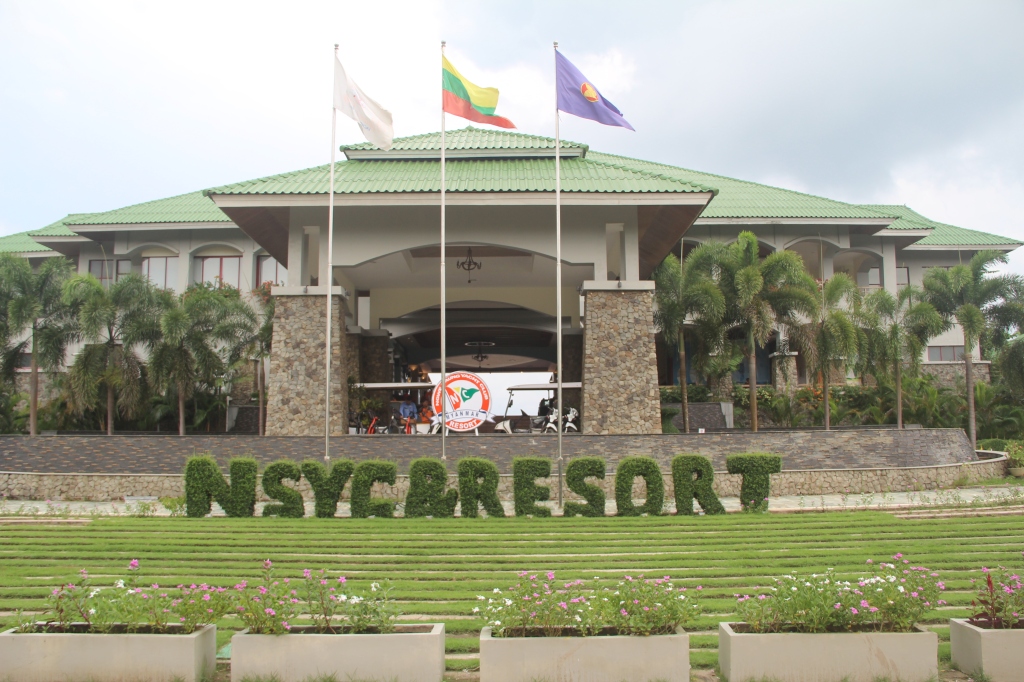
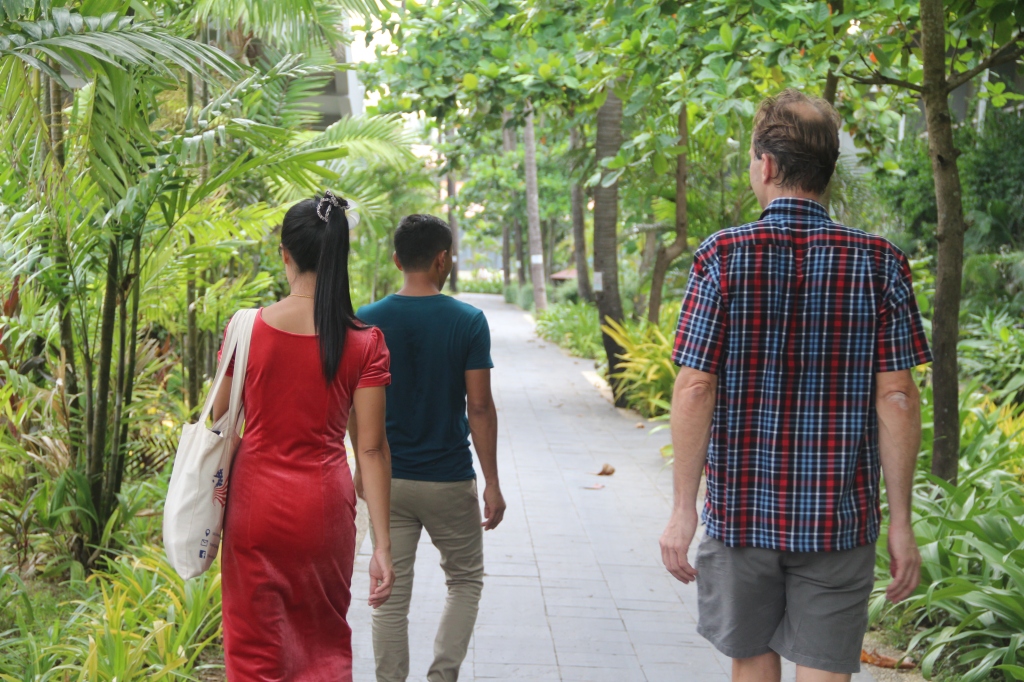
Ngwe Saung Yacht Club & Resort
We’ve been talking with the Ngwe Saung Yacht Club & Resort for some time, they really want to make a difference in their local environment, and like us are concerned about the amount of trash being dumped in the local environment.
This is a brave commitment, and one that’s badly needed.
Since Ngwe Saung opened up for mass tourism a few years ago, visitor numbers have increased steadily — but the town has no effective way of dealing with the waste.
The solution up until now is that hotels are dumping all their trash — plastic bottles, old toilet seats, uneaten meals, dry palm leaves and coconut shells, copper wires, food scraps and light bulbs — in a huge dump site just off the main road into town. Wild elephants come wandering through, sometimes.
It’s hardly a sustainable solution. But up until now, there hasn’t been an alternative either.
Strategic decision
The hotel brought us in this month to help them set up a bokashi composting system for their food waste. It’s been great. We have really enjoyed working with the hotel staff these last weeks, chefs, gardeners, housekeepers and management. Their commitment is real, even if, in the beginning, everyone was a bit nervous about dealing with this whole trash thing.
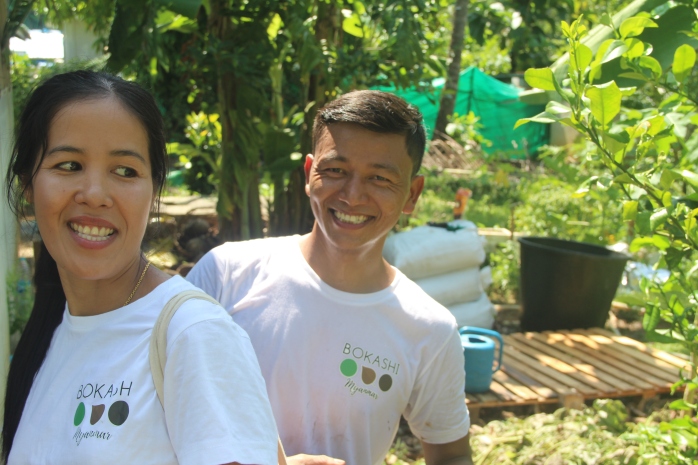
Food waste audit and training
We set up the training in two sessions of two days, with some 10 days in between. The focus of the first session was the kitchen; the focus of the second was the garden.
Our first step was to do a waste audit. How much food waste does the hotel produce? What type of food waste is it, and when and where is it produced?
A large hotel like this produces 4 to 8 tons of food waste per month, we know that from experience. But it’s hard to know exactly until you get stuck in and measure it, go through the trash bags, talk to the chefs, get a feeling for how it all works.
And food waste is not all a bad thing. So part of what we do is look at what is in the trash and why: some is uneaten food from guests, but most tends to be prep waste. Things like pineapple skins, potato and carrot peelings, egg-shells, coffee grounds, you name it.
Second step is to train the kitchen staff in waste segregation. Kitchens vary a lot, and in this case they were already doing a great job. There was very little plastic in the food waste bins already, and when the head chef found some he made his frustration very clear.
Step three was to train the kitchen staff how to transfer the food waste to bokashi barrels for fermentation. No liquids, add some absorbent material (rice bran, tissue) and layer in a liter of bokashi bran per barrel. Lid on tightly. Store in the correct spot.
The chefs are filling some five barrels per day at the moment, so the work needs to be efficient but not interfere with their daily routines. At the moment, they’re filling the barrels at the end of each shift, but this may change later, we have to just work it out.

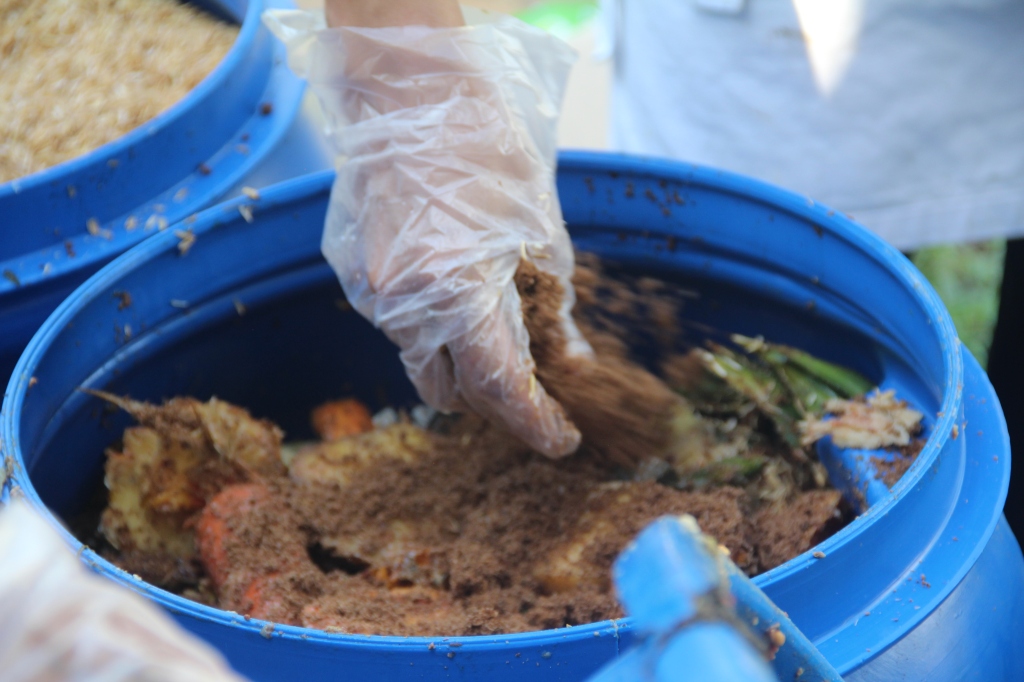
How and why
There’s two types of training: how and why. Filling barrels is how, but the chefs also wanted to know why they should be doing this. It creates some extra work for them, and no one does that for no reason.
We gathered up all the hotel staff in two shifts for a classroom session on food waste in hotels, the impact it has on the environment at all levels. Food waste is invisible for most people: something they hardly even see, and once it leaves the building they don’t think about it. As long as the workspace is neat and tidy the job is done, right?
There’s two parts of this: one, that organic waste is NOT trash (our mantra!) and that we all have some responsibility to do the best we can with it. And that organic waste is a hugely valuable resource. That we can use it to create healthy, fertile soil. And healthy soil = healthy food = healthy people (our other favourite mantra).
Implementation and gardener training
Ten days later we returned to find 66 barrels filled with fermented food waste and nearly all of them perfect. Impressive. The staff had set up a Monday to Sunday system for storing the barrels so everyone would know what they’re doing. (The barrels need to ferment at least 7 days, so each day the gardeners will remove the barrels for that day and the chefs replace them with new ones)
We weighed the barrels, and calibrated our earlier estimates. Basically five barrels per day still, on average. The added workload is around an hour per day, filling the barrels after each shift.
The hotel has a big team of gardeners, and we trained them in two groups. They were nervous before we started. Working with week-old food waste wasn’t the job they had signed up for. And it wasn’t immediately obvious to them why organic compost should be so much better than the chemical fertilisers they’re currently using.
An hour later, everyone was more relaxed. This wasn’t at all as bad as they’d expected!

Together we built bokashi stacks from shipping pallets, they will have 20-30 of them in the end. Each stack holds a cubic meter of compost; we like the pallets because they look neat, and are so flexible. If we want to move them, we can just move them.
The teams worked together to layer up the stacks: green, brown, black as we always do. They had collected up big piles of dry leaves and grass from the grounds over the last week and were amazed how much garden waste the stacks swallowed.
This will be so good, to get the garden waste processed on the property. Until now it too has been trucked away to landfill, everyone thought it was trash. Not any more!
Teamwork
This is extra work for the gardeners too, they were a bit worried they might get an extra load they couldn’t handle. But were pleasantly surprised how quickly it went, especially when they worked together in a team with one layering up the stack and two or three team-members bringing in supplies of bokashi barrels and dry leaves.
Each stack swallows some 20 barrels of bokashi food waste and the equivalent volume of dry leaves. Takes an hour or so to fill, once everything is collected up. So yes – extra work for the gardeners, but by the end of the day they were already looking forward to getting their first compost harvest in two months time.
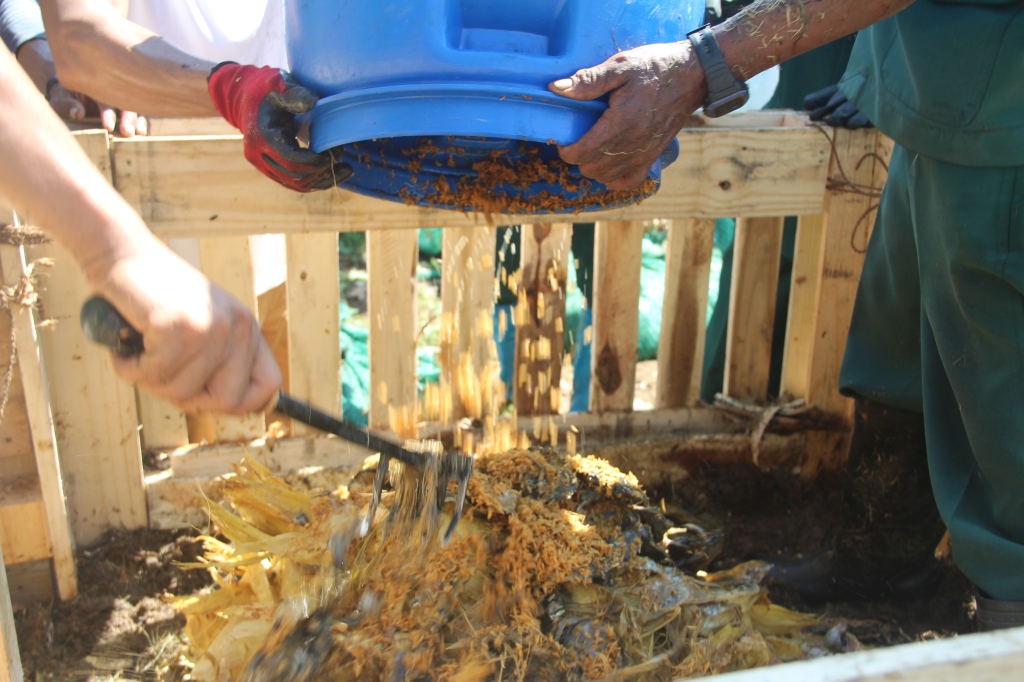

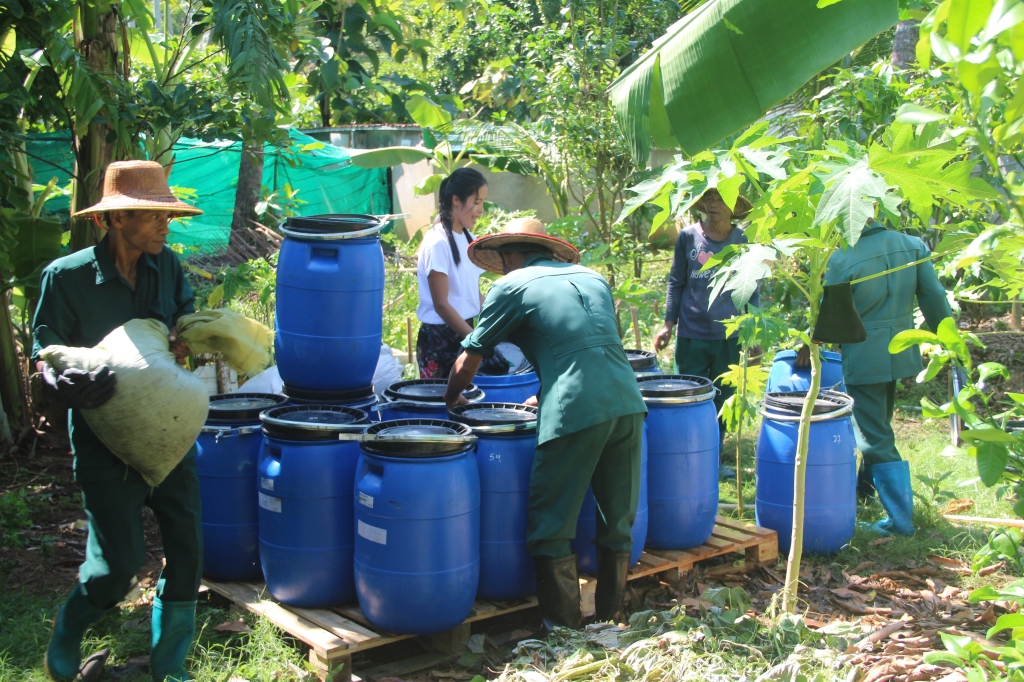
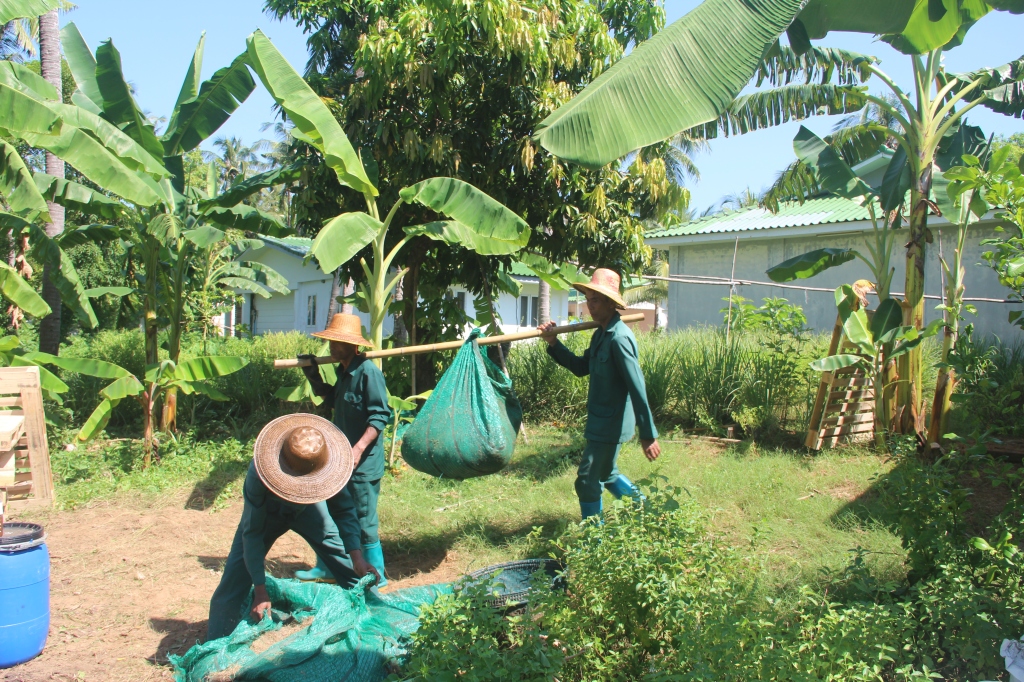
From then on, assuming they fill a couple of stacks per week, they will also be harvesting a couple of stacks per week. That will be black gold for them in their extensive grounds, where everything is struggling to grow in beach sand.
And, as a bonus, there will be a lot fewer truck trips up to the landfill.
Building garden beds
Compost stacks are great because they use up so many dry leaves, an eternal problem in big gardens. But there are many other ways to use bokashi; we showed the gardeners some other ways they could use the barrels in their plant nursery.
We started with setting up a soil factory for them in a big black rain barrel– the quickest of all ways to convert fermented bokashi to compost. Just mix 50:50 compost and bokashi food waste well, top with soil, and leave for a week or two. That’s it! Perfect way for them to see that this really works, but also to start creating an instant supply of ready compost for pot plants etc.
We also showed them how to build garden beds with bokashi directly. Into their raised bamboo beds (with frames of bamboo poles) we put a thick layer of dried grass. Onto this we emptied several barrels of bokashi food waste. Another thick layer of browns: dried grass was on hand so we used it. And on top, a layer of sandy soil, ready for planting.
Instant, and highly nutrient-rich, garden beds made very quickly. The pay-back will be very apparent when the tomatoes, chili and herbs grown in these beds are compared to the ones grown in the standard mix of sand, ash and fertiliser.

Outdoor classroom
The gardeners got over their fear quite quickly and started to become curious. How does this work, actually? And why is it so important that their management are insisting on them doing it?
We ran a couple of “why” sessions, the first direct in the nursery with notebooks perched on plastic jerry cans. Pragmatic!
Gardeners rarely receive much training like this from outside, we were impressed by how interested they were, and keen to learn.
How does EM work? How do you build fertile soil? Why is it better to avoid fertilisers if you can and build soil instead? What resources are there on the grounds that have never been valued before — that are not at all “trash”?
And a session on soil
They were still keen for more, so we did a final classroom session on soil, indoors, with powerpoint and all.
What is soil? Why is it important? What does organic matter do in the soil? Why do we need to give back to the soil? How is it related to climate change? What can we do to improve the situation?
And so on — what’s happening in the garden here is the micro version of what’s happening in the whole of Myanmar, what’s happening in the whole of the world. If we protect our soil, the soil will protect us.
Actually it’s that simple.
Next steps
We’ll follow up regularly now, coach as needed, sort out any teething troubles. But technically they’re already up and running, it was easier than they thought, less scary, and once they understood why it mattered, it seemed like there was a real commitment from both kitchen and garden teams.
The real payback will be in a couple of months though, when their compost comes on stream and they can start using it in the gardens. The grounds are beautifully maintained, but improving the soil will make them more fertile and everyone’s job will be easier.
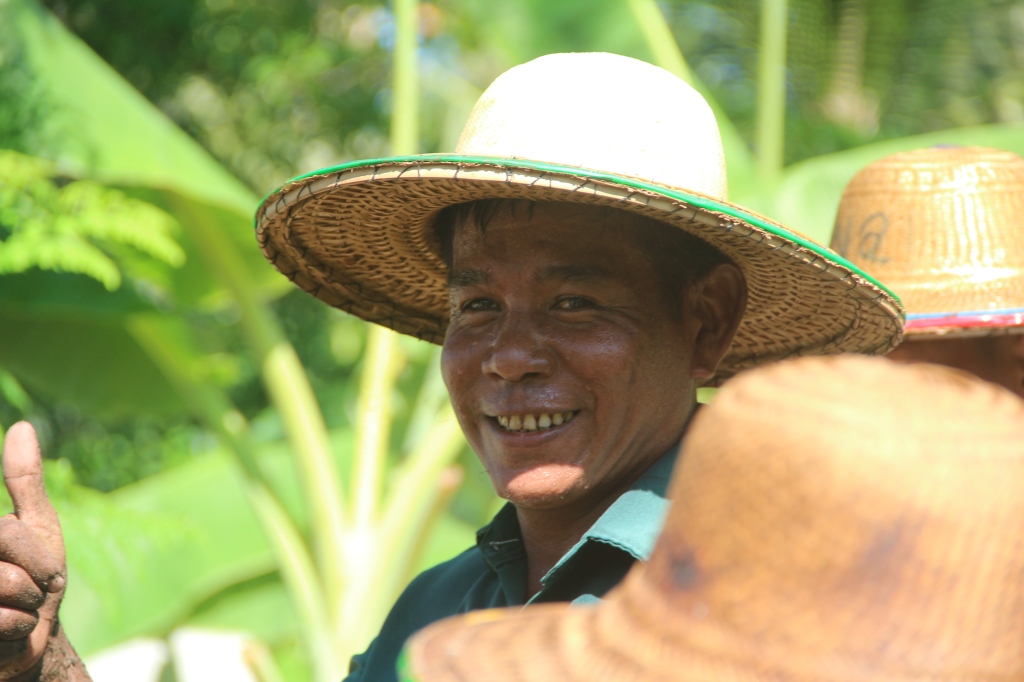
What we’ve learned
From our side, we learned a few things too. We’ve worked with this bokashi thing for so long we know it works, but we learned to appreciate and understand the fear that people have of change, of working with trash, of potentially getting a lot of extra work. For them, it’s all completely new and untested. Stressful.
We gained a deeper respect for good leadership. The management at NSYC are impressive: committed and professional. This is new for them too, but they made it happen, had the teams working really effectively, and made it clear that this was non-negotiable. Food waste is now history at NSYC.
We realised the value of sharing both hands-on knowledge and deeper explanations. The how, and the why. It really helped people feel more motivated when they understood the back story, that this was something bigger than they are, and that they are part of a big global awakening related to soil, food waste, and climate change.
And we appreciated that good training takes time. It’s not worth rushing through something like this. We want people to understand what they’re doing, learn the new habits while we’re still there, have time to think and discuss between themselves and ask questions. To feel comfortable and supported.
So this is how we will work in future, too.
And we are so very happy to have started this first project at Ngwe Saung beach with total commitment from the whole team on both sides.
This needs to work, for our shared future.
/Bokashi Myanmar team
Read more! Hotel food waste is history
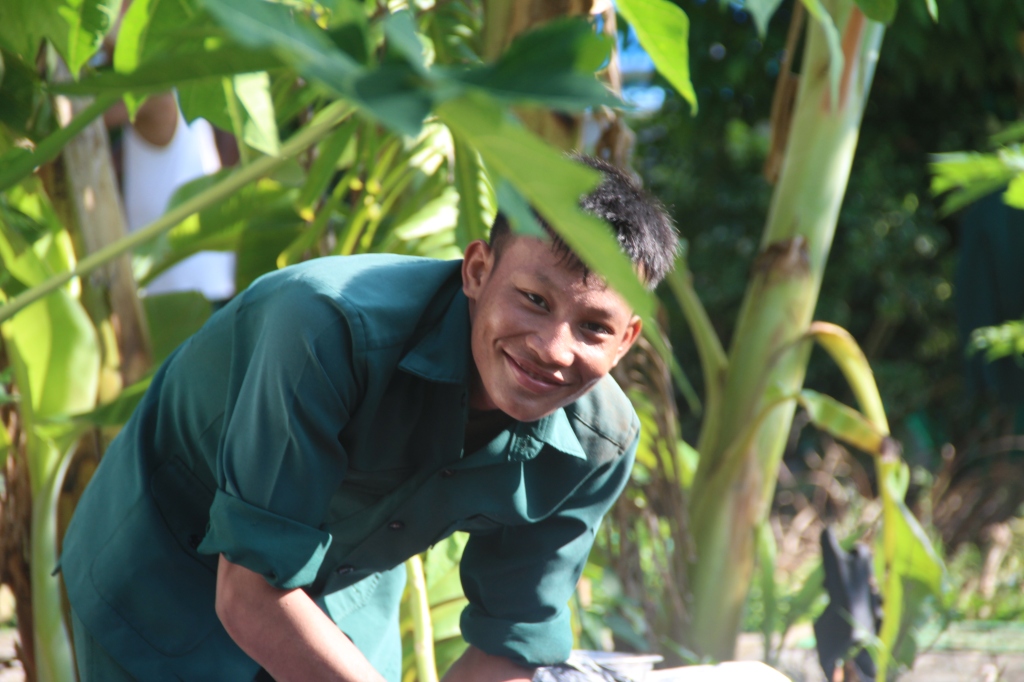
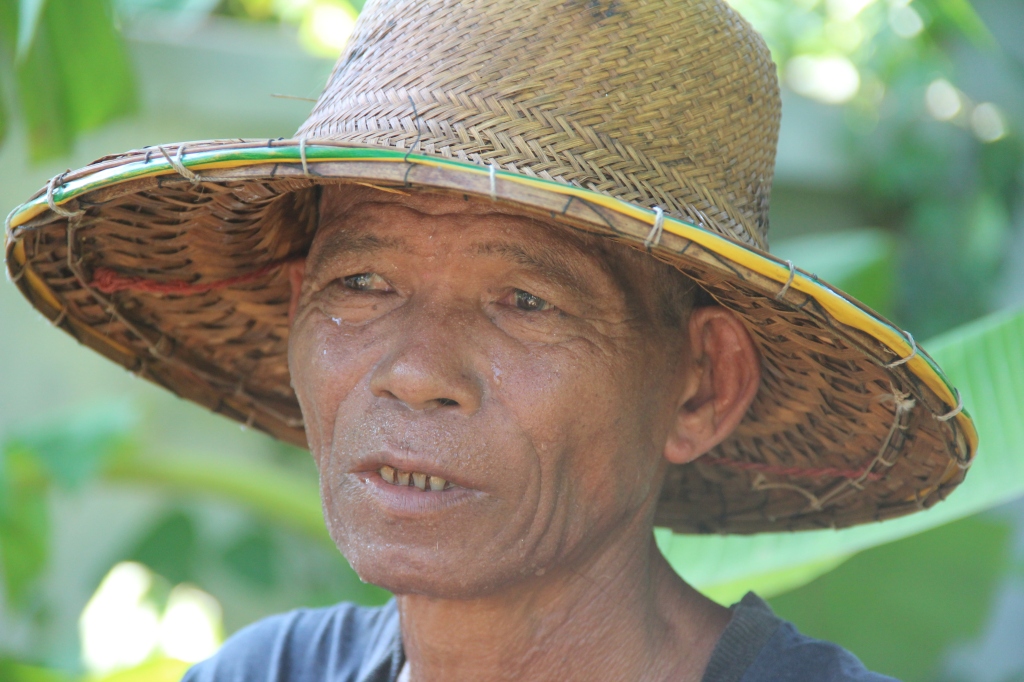
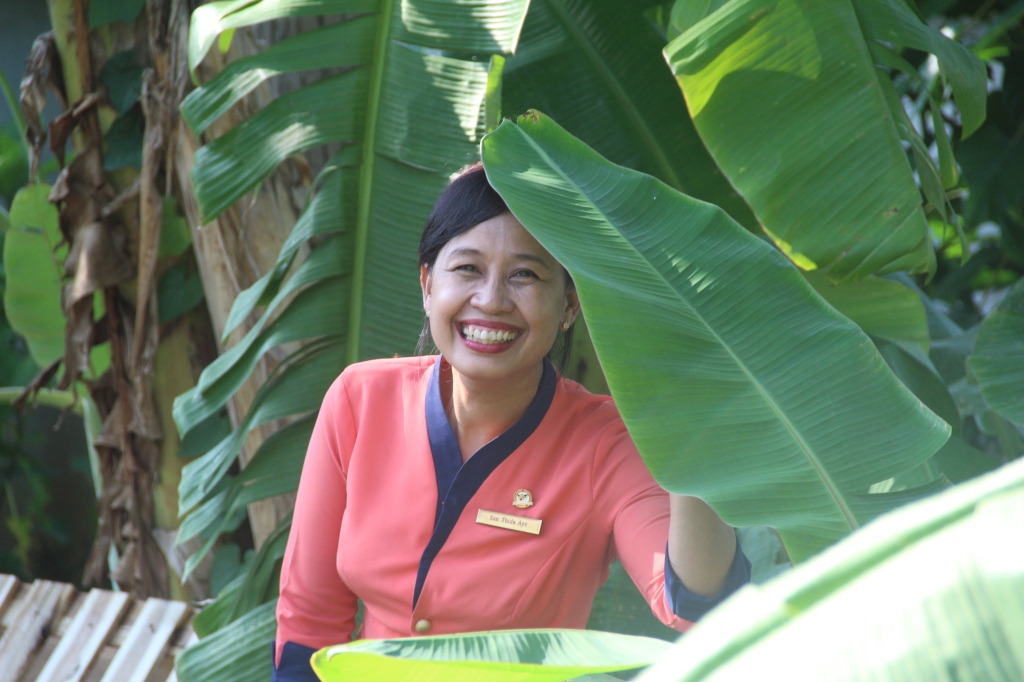

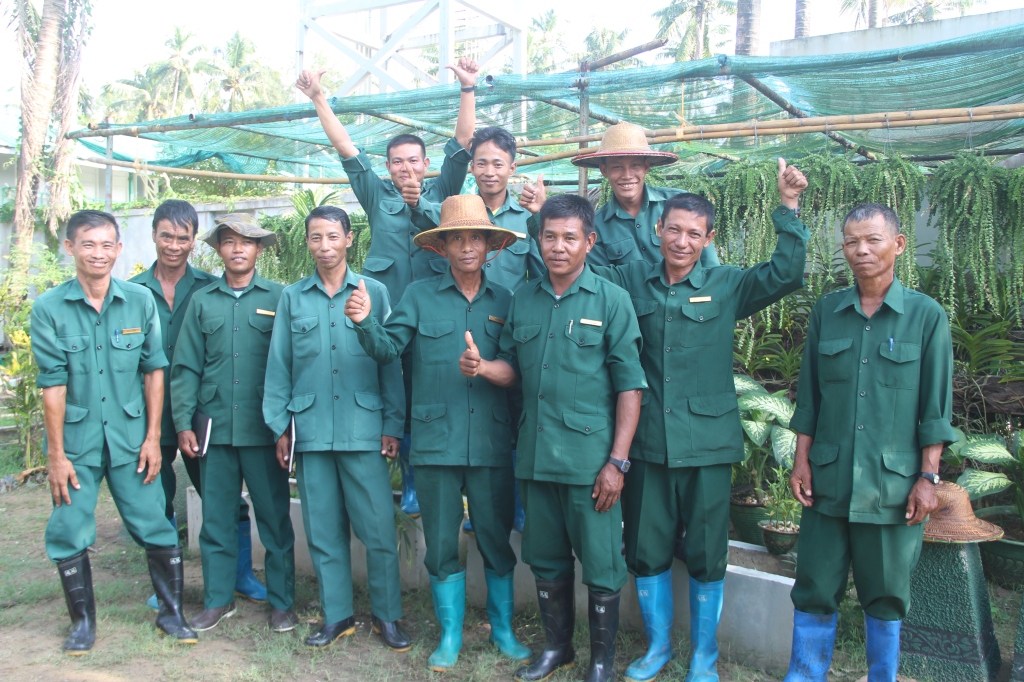
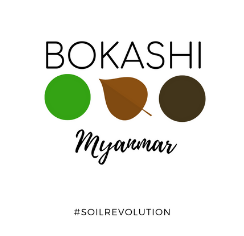

This is an amazing story! So well written it gave me goosebumps thinking of this one hotel taking the leap and forging the way for hopefully many more in the future! Incredible work! Thanks for all that you do!
LikeLike
Thank you! Really helps us to get some encouragement like this, thanks so much for taking the time to let us know!
LikeLike
This was a really good story! I was a bit surprised that so many people were persuaded to do this effort togeteher. The only thing I know about fertilizers is that they are almost poisonous and doesnt hold any coal. I wish you good luck in your future work!
LikeLike